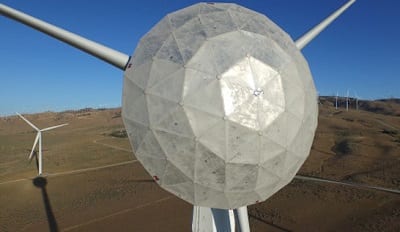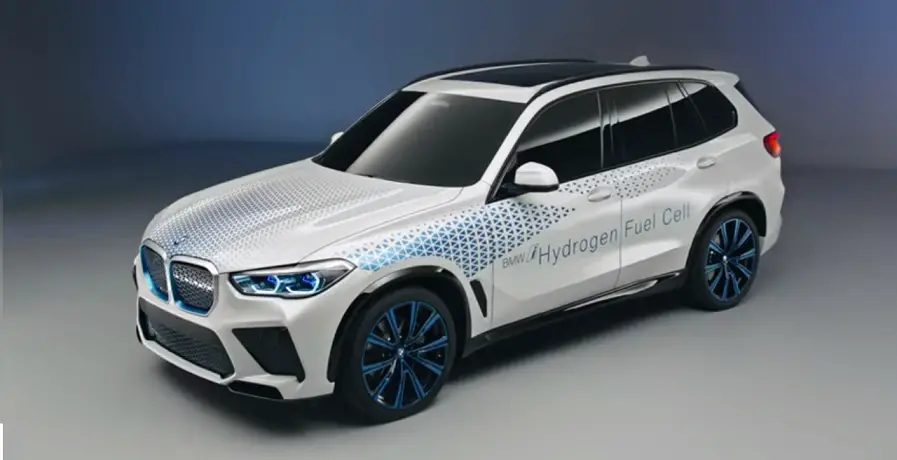New GE technology could improve wind energy generation
June 12, 2015GE is showing off its new wind turbine design.
After two years of working on a new turbine design to help improve wind energy generation, GE (General Electric) has finally revealed its latest wind power technology called the ecoROTR, which some might find looks silly with its “big nose” appearance, but if the company’s theory is correct, this new design could result in larger turbines with greater efficiency for windy areas that are presently too difficult to reach for the industry.
The large dome on the new turbines can capture wind that would otherwise be wasted.
The reason that some have called the new ecoROTR turbine the “big-nose wind turbine” is the apparatus features a huge 20,000 pound, 60-foot wide silver aluminum dome that is bolted to the rotor. In other words, the massive dome sits directly in front of the blades like a nose.
It may seem counterproductive to put what appears to be a giant shield on a wind turbine, because one would think that would block wind from reaching the blades. However, the ecoROTR’s dome spins and actually redirects and refocuses the wind to the blade’s outer edges, which are far more efficient at harnessing wind than the inner section that the dome covers.
Furthermore, the dome allows the blades of turbines to be made larger, but not longer so that they have a better chance of capturing more wind. It’s important that the blades are made bigger but not longer because the current length of traditional turbine blades are already hard to transport.
According to GE, “When wind hits the center of the wind turbine where the blades are attached, it’s wasted. That’s because the blades are basically levers and the same wind generates more force further from the hub.”
Wind energy testing of GE’s ecoROTR turbine has begun.
GE has started testing its first full-scale ecoROTR prototype at a California test site to discover if it will confirm the company’s expected wind tunnel data. For the test, it hooked up the dome to a 1.7 megawatt (MW) turbine. While this is not the most powerful turbine, like the 3.2 MW made for high-speed winds, it should be sufficient for the company’s tests.
The data collection phase of this prototype will take four months. After the test period is complete, GE will have a better idea of whether or not its new wind energy technology performs as well as they believe it will.


 With over 15 years of reporting hydrogen news, we are your premier source for the latest updates and insights in hydrogen and renewable energy.
With over 15 years of reporting hydrogen news, we are your premier source for the latest updates and insights in hydrogen and renewable energy.
This technology is not necessarily new. Similar concepts have been previously studied, but never implemented. 3% AEP increase is unlikely in practice with this design, and LCOE impact would be negligible. Material costs with the additional head mass of the dome itself combined with structural reinforcements for the hub as well as alteration of the spinner negate most of the performance benefit. Rotor induction is not altered by this, only the channeling of flow from the less productive central portion of the rotor to the outboard sections. This alters the angle of incidence of the oncoming wind which will make it necessary to alter optimal pitch angle as well. Changing optimal pitch at rated will also reduce AEP from the rotor slightly, but the hope is that the increased flow on the outboard section (also slightly accelerated by the dome) will compensate. This technology in combination with a tailored blade that has an optimal pitch angle to work with the dome might provide more of a benefit, but applying this as some sort of “upgrade” to existing turbines is unlikely to provide the gains advertised. The design changes and tooling changes to the blade will also make this costly to implement.